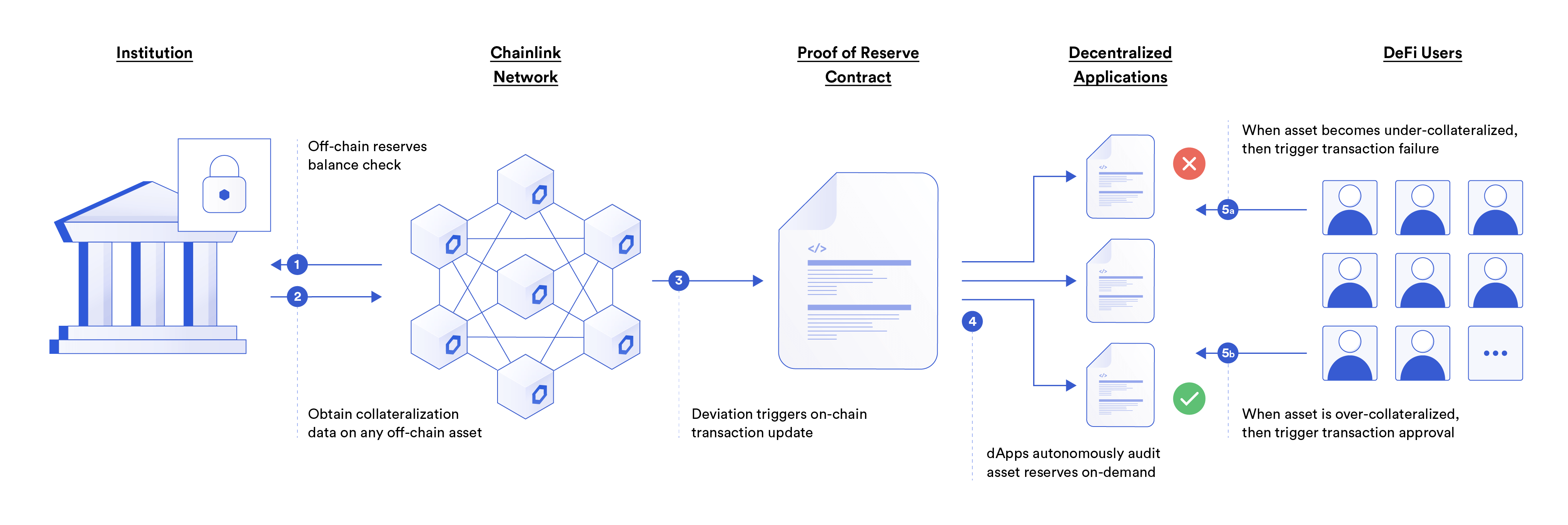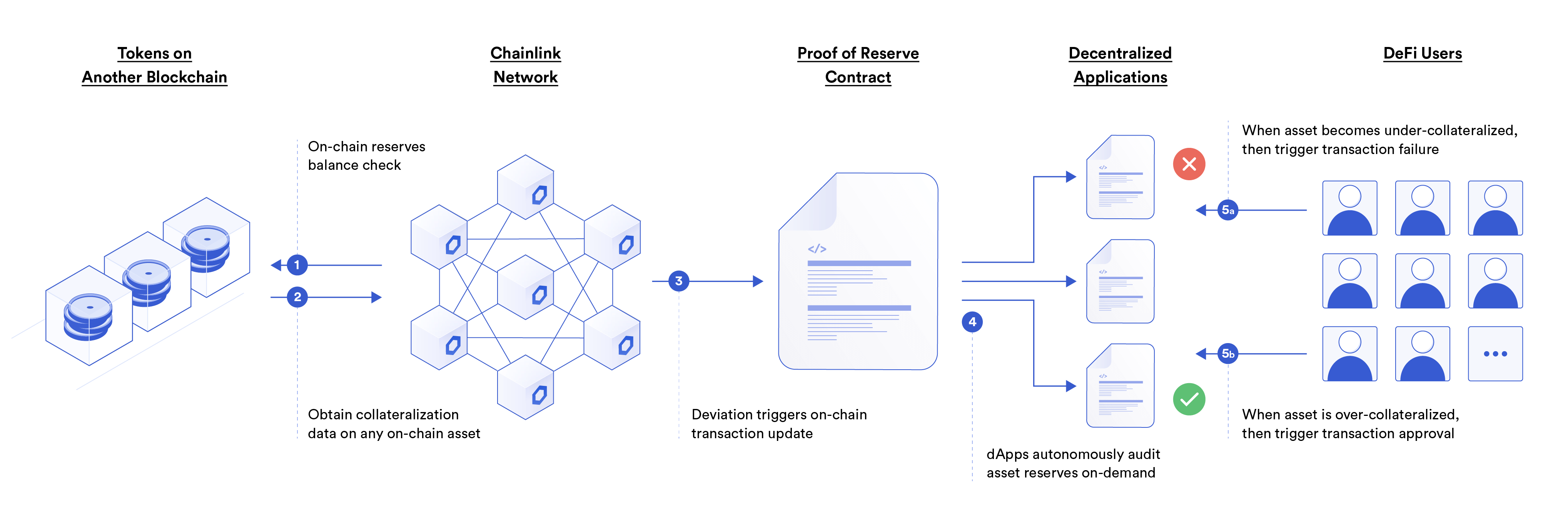Proof of Reserve Feeds
Chainlink Proof of Reserve Feeds provide the status of the reserves for several assets. You can read these feeds the same way that you read other Data Feeds. Specify the Proof of Reserve Feed Address that you want to read instead of specifying a Price Feed address. See the Using Data Feeds page to learn more.
To find a list of available Proof of Reserve Feeds, see the Proof of Reserve Feed Addresses page.
Types of Proof of Reserve Feeds
Reserves are available for both cross-chain assets and offchain assets. This categorization describes the data attestation variations of Proof of Reserve feeds and helps highlight some of the inherent market risks surrounding the data quality of these feeds.
Reserves are available for both offchain assets and cross-chain assets. Token issuers prove the reserves for their assets through several different methods.
Offchain reserves
Offchain reserves are sourced from APIs through an external adapter.

Offchain reserves provide their data using the following methods:
- Third-party: An auditor, accounting firm, or other third party attests to reserves. This is done by combining both fiat and investment assets into a numeric value that is reported against the token.
- Custodian: Reserves data are pulled directly from the bank or custodian. The custodian has direct access to the bank or vault holding the assets. Generally, this works when the underlying asset pulled requires no additional valuation and is simply reported onchain.
- ⚠️ Self-attested: Reserve data is read from an API that the token issuer hosts. Self-attested feeds carry additional risk.
Cross-chain reserves
Cross-chain reserves are sourced from the network where the reserves are held. Chainlink node operators can report cross-chain reserves by running an external adapter and querying the source-chain client directly. In some instances, the reserves are composed of a dynamic list of IDs or addresses using a composite adapter.

Cross-chain reserves provide their data using the following methods:
- Wallet address manager: The project uses the IPoRAddressList wallet address manager contract and self-attests to which addresses they own.
- Wallet address: The project attests which addresses they own through a self-hosted API.
Using Proof of Reserve Feeds
Read answers from Proof of Reserve Feeds the same way that you read other Data Feeds. Specify the Proof of Reserve Feed Address that you want to read instead of specifying a Price Feed address. See the Using Data Feeds page to learn more.
Using Solidity, your smart contract should reference AggregatorV3Interface, which defines the external functions implemented by Data Feeds.
// SPDX-License-Identifier: MIT
pragma solidity ^0.8.7;
import "@chainlink/contracts/src/v0.8/shared/interfaces/AggregatorV3Interface.sol";
contract ReserveConsumerV3 {
AggregatorV3Interface internal reserveFeed;
/**
* Network: Ethereum Mainnet
* Aggregator: WBTC PoR
* Address: 0xa81FE04086865e63E12dD3776978E49DEEa2ea4e
*/
constructor() {
reserveFeed = AggregatorV3Interface(
0xa81FE04086865e63E12dD3776978E49DEEa2ea4e
);
}
/**
* Returns the latest price
*/
function getLatestReserve() public view returns (int) {
// prettier-ignore
(
/*uint80 roundID*/,
int reserve,
/*uint startedAt*/,
/*uint timeStamp*/,
/*uint80 answeredInRound*/
) = reserveFeed.latestRoundData();
return reserve;
}
}